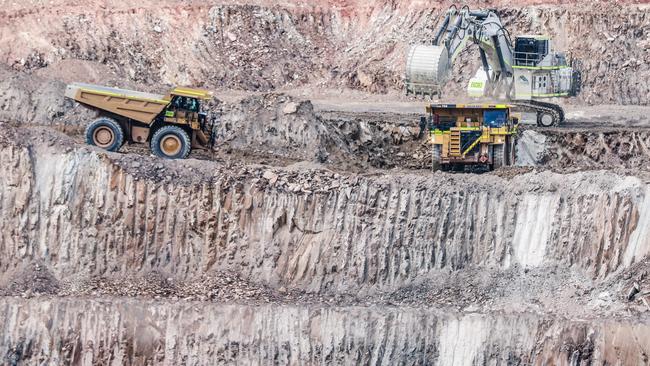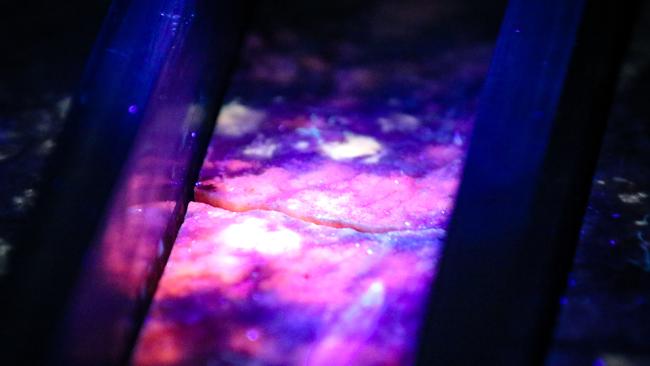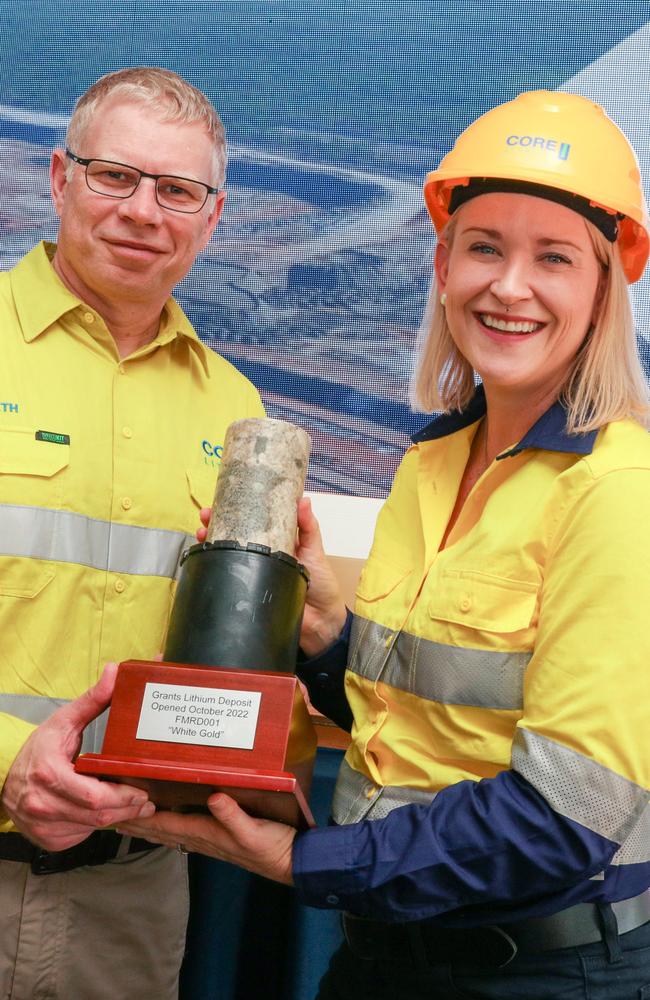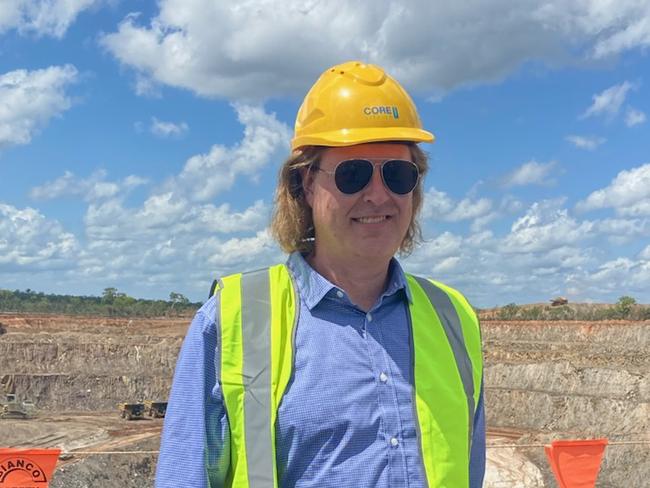Core Lithium officially opens Finniss mine near Darwin
The Northern Territory has celebrated the historic milestone with its first lithium mine, billed as a turning point for climate change action and industry innovation.
Business
Don't miss out on the headlines from Business. Followed categories will be added to My News.
Core Lithium’s Territory-first Finniss mine has officially opened, with a plaque unveiling at the prospect’s Cox Peninsula site about 80km south of Darwin.
Standing just metres from the Grants pit which has been the focus of the company’s production schedule, Mines Minister Nicole Manison joined with Core chairman Greg English and chief executive Gareth Manderson to formally open the mine six years after exploration first began at the site.
Standing nearby was Stephen Biggins, company founder and the man credited with driving the mine’s development before handing over the chief executive’s role to former Rio Tinto director Mr Mandseron earlier this year.

The mine could potentially last for at least 12 years, generate hundreds-of-millions of dollars in lithium sales and currently employs about 300 workers on site, of whom about 80 per cent are considered “local”.
Ms Manison said the mine was great news for the economy and environment.
“Everybody wins,” she said.
“This is a historic day for the Northern Territory because we have just opened our first ever lithium mine and this is the first lithium mine outside of Western Australia.
“We’re entering the most exciting new period of modern mining here in the Northern Territory where we will be able to help provide the resources the globe needs to tackle climate change and decarbonisation.
“We have got the materials that they need in the world.
“We have got some of the most exciting mines that are currently coming through but Core Lithium is just such a great achievement.
“We have worked hard as a Northern Territory government in partnership with Core Lithium to deliver this mine in under five years. That is a huge achievement.

“We know right now they have got 12 years of mining life but Core Lithium are very optimistic about the future that they will be able to significantly extend that mining life because they have an ambitious exploration program that will be kicking off next year to go out and find new lithium and they are very positive about the prospects.”
In a day of announcements for Core Lithium, it also revealed that Primero Group has been awarded a five-year contract to operate and maintain processing and infrastructure facilities at the mine.
Spodumene ore concentrate will be extracted for conversion into lithium for EV and other batteries.
Mr Manderson said 80 per cent of Core’s lithium has been sold to offtake partners including Ganfent Lithium and Sichuan Yahua.
“Core is bringing production online at a time of high lithium prices, strong global demand and constrained supply,” Mr Manderson said.

“The Core team has done a fantastic job quickly transitioning from discovery and exploration to construction and shortly supply of high-grade lithium concentrate to a global market in six years.”
He said the company had embarked on a “significant exploration program” around the Finniss region which could see the life of the project extend beyond 12 years.
About 5km south of the Grants mine Core is preparing the BP33 mine which will be developed underground and two other prospects, Carlton and Hang Gong, are also in reserve.

Commenting publicly for the first-time since his surprise resignation as chief executive earlier this year, geologist and company founder Stephen Biggins said he remained on the board and actively involved in the company.
“It was about the right people at the right time,” he said.
Although there is debate around when the last new mine was opened in the Territory it is generally accepted to be the Roper Project, now known as Nathan River, which was launched in 2012.
Larrakia woman Nicole Brown delivered the welcome to country at Monday’s Finniss mine launch.
Join us as we discuss Northern Territory priorities to build a sustainable $40bn economy through population growth, private industry, defence, employment, mining and tourism, by 2030.
Secure your ticket to the NT News’ Future Northern Territory today. Click here.





